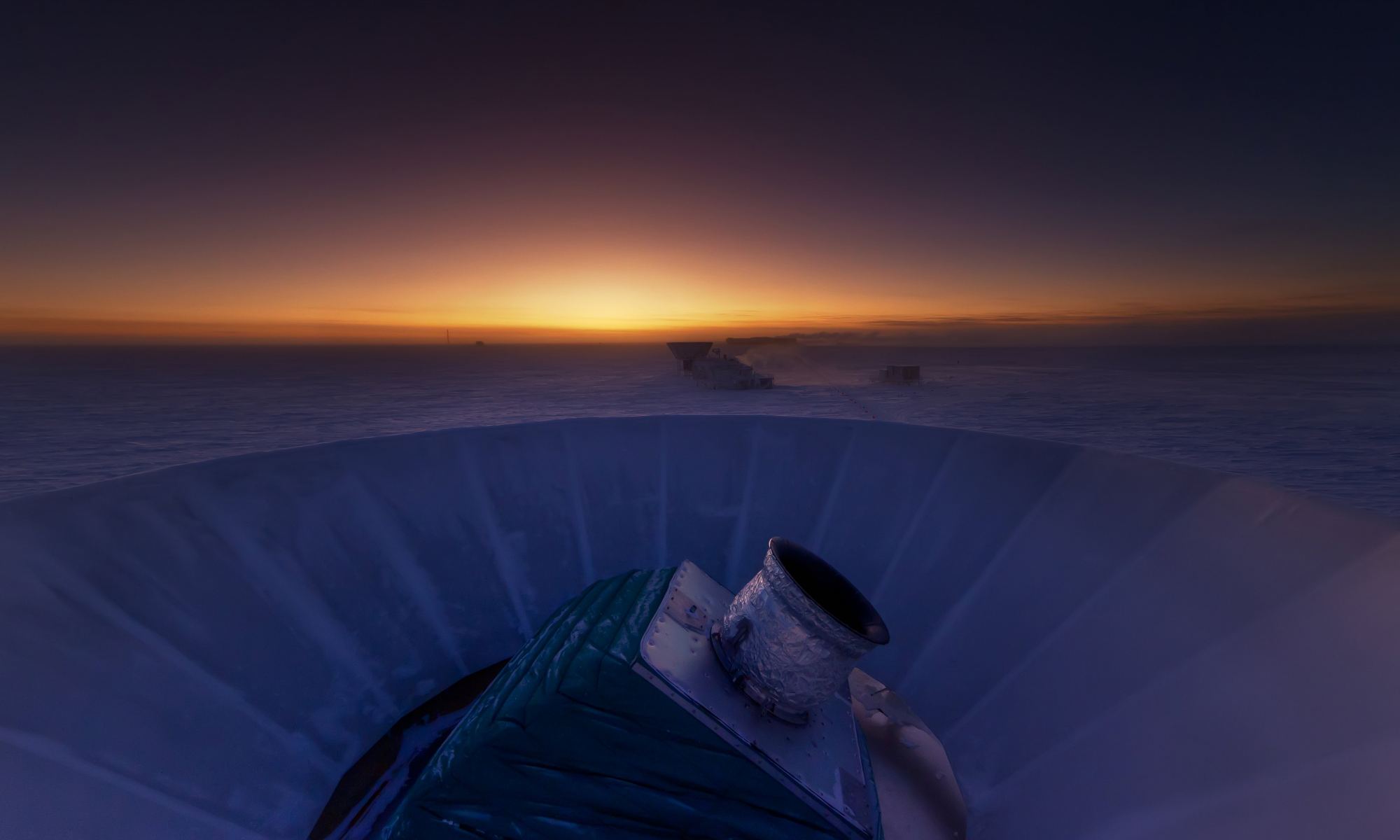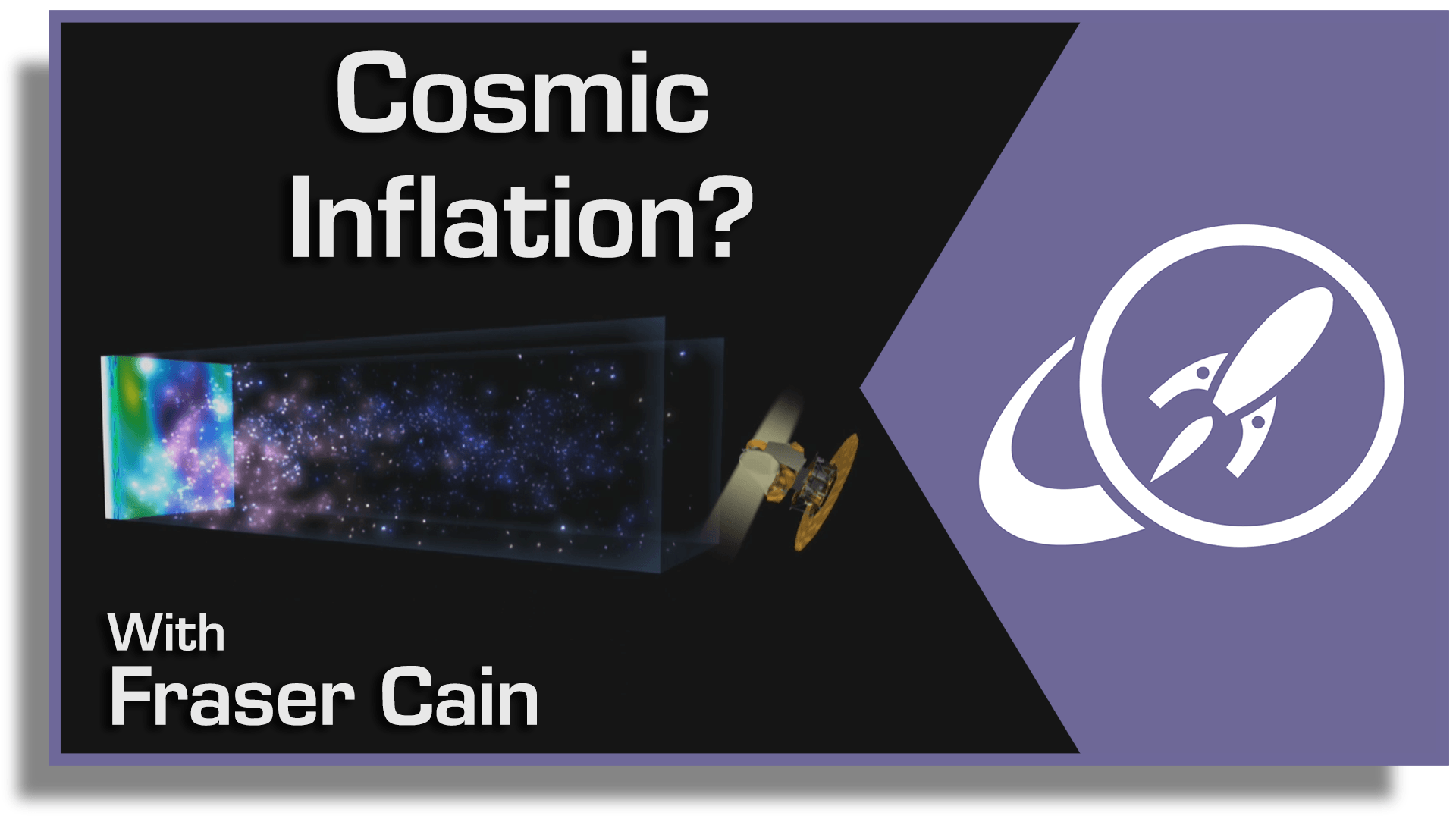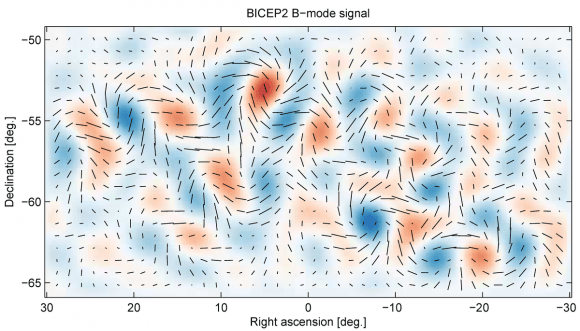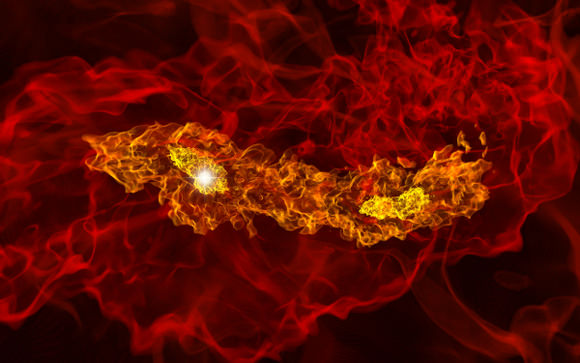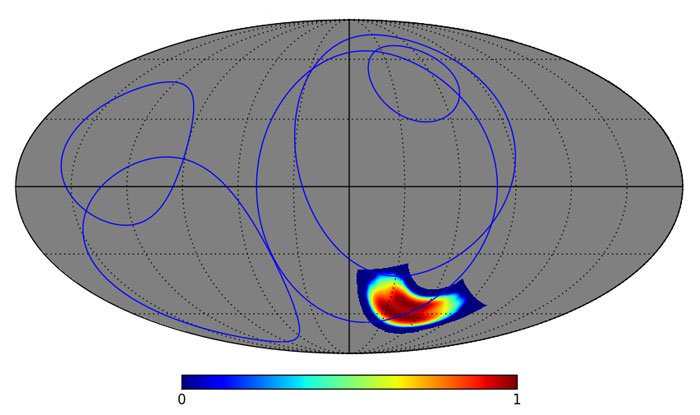The standard model of cosmology is a remarkably powerful and accurate description of the universe, tracing its evolution from the big bang to its current state, but it is not without mysteries. One of the biggest unsolved questions of the standard model is known as early cosmic inflation.
Continue reading “Primordial Gravitational Waves Continue to Elude Astronomers”Astronomy Cast Bonus Episode: Dust with Dr. Paul Sutter

Recorded during the Astrotour to Costa Rica, Fraser talks to Dr. Paul Matt Sutter about the nature of dust and BICEP 2’s claim of discovering primordial gravitational waves.
Continue reading “Astronomy Cast Bonus Episode: Dust with Dr. Paul Sutter”
What Was Cosmic Inflation? The Quest to Understand the Earliest Universe
The Big Bang. The discovery that the Universe has been expanding for billions of years is one of the biggest revelations in the history of science. In a single moment, the entire Universe popped into existence, and has been expanding ever since.
We know this because of multiple lines of evidence: the cosmic microwave background radiation, the ratio of elements in the Universe, etc. But the most compelling one is just the simple fact that everything is expanding away from everything else. Which means, that if you run the clock backwards, the Universe was once an extremely hot dense region
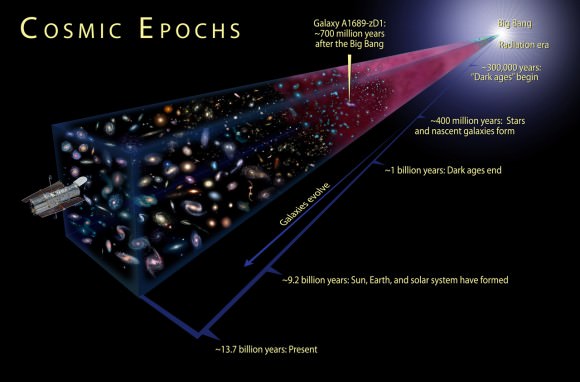
Let’s go backwards in time, billions of years. The closer you get to the Big Bang, the closer everything was, and the hotter it was. When you reach about 380,000 years after the Big Bang, the entire Universe was so hot that all matter was ionized, with atomic nuclei and electrons buzzing around each other.
Keep going backwards, and the entire Universe was the temperature and density of a star, which fused together the primordial helium and other elements that we see to this day.
Continue to the beginning of time, and there was a point where everything was so hot that atoms themselves couldn’t hold together, breaking into their constituent protons and neutrons. Further back still and even atoms break apart into quarks. And before that, it’s just a big question mark. An infinitely dense Universe cosmologists called the singularity.
When you look out into the Universe in all directions, you see the cosmic microwave background radiation. That’s that point when the Universe cooled down so that light could travel freely through space.
And the temperature of this radiation is almost exactly the same in all directions that you look. There are tiny tiny variations, detectable only by the most sensitive instruments.
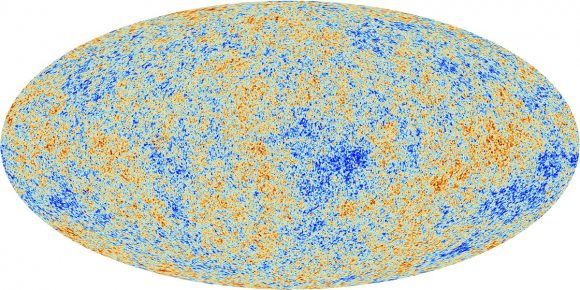
When two things are the same temperature, like a spoon in your coffee, it means that those two things have had an opportunity to interact. The coffee transferred heat to the spoon, and now their temperatures have equalized.
When we see this in opposite sides of the Universe, that means that at some point, in the ancient past, those two regions were touching. That spot where the light left 13.8 billion years ago on your left, was once directly touching that spot on your right that also emitted its light 13.8 billion years ago.
This is a great theory, but there’s a problem: The Universe never had time for those opposite regions to touch. For the Universe to have the uniform temperature we see today, it would have needed to spend enough time mixing together. But it didn’t have enough time, in fact, the Universe didn’t have any time to exchange temperature.
Imagine you dipped that spoon into the coffee and then pulled it out moments later before the heat could transfer, and yet the coffee and spoon are exactly the same temperature. What’s going on?
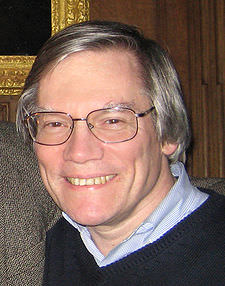
To address this problem, the cosmologist Alan Guth proposed the idea of cosmic inflation in 1980. That moments after the Big Bang, the entire Universe expanded dramatically.
And by “moments”, I mean that the inflationary period started when the Universe was only 10^-36 seconds old, and ended when the Universe was 10^-32 seconds old.
And by “expanded dramatically”, I mean that it got 10^26 times larger. That’s a 1 followed by 26 zeroes.
Before inflation, the observable Universe was smaller than an atom. After inflation, it was about 0.88 millimeters. Today, those regions have been stretched 93 billion light-years apart.
This concept of inflation was further developed by cosmologists Andrei Linde, Paul Steinhardt, Andy Albrecht and others.
Inflation resolved some of the shortcomings of the Big Bang Theory.
The first is known as the flatness problem. The most sensitive satellites we have today measure the Universe as flat. Not like a piece-of-paper-flat, but flat in the sense that parallel lines will remain parallel forever as they travel through the Universe. Under the original Big Bang cosmology, you would expect the curvature of the Universe to grow with time.
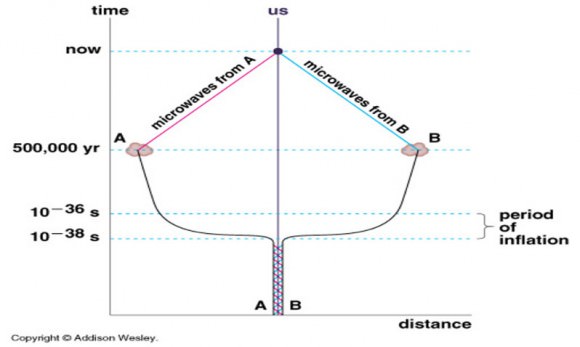
The second is the horizon problem. And this is the problem I mentioned above, that two regions of the Universe shouldn’t have been able to see each other and interact long enough to be the same temperature.
The third is the monopole problem. According to the original Big Bang theory, there should be a vast number of heavy, stable “monopoles”, or a magnetic particle with only a single pole. Inflation diluted the number of monopoles in the Universe so don’t detect them today.
Although the cosmic microwave background radiation appears mostly even across the sky, there could still be evidence of that inflationary period baked into it.

In order to do this, astronomers have been focusing on searching for primordial gravitational waves. These are different from the gravitational waves generated through the collision of massive objects. Primordial gravitational waves are the echoes from that inflationary period which should be theoretically detectable through the polarization, or orientation, of light in the cosmic microwave background radiation.
A collaboration of scientists used an instrument known as the Background Imaging of Cosmic Extragalactic Polarization (or BICEP2) to search for this polarization, and in 2014, they announced that maybe, just maybe, they had detected it, proving the theory of cosmic inflation was correct.
Unfortunately, another team working with the space-based Planck telescope posted evidence that the fluctuations they saw could be fully explained by intervening dust in the Milky Way.
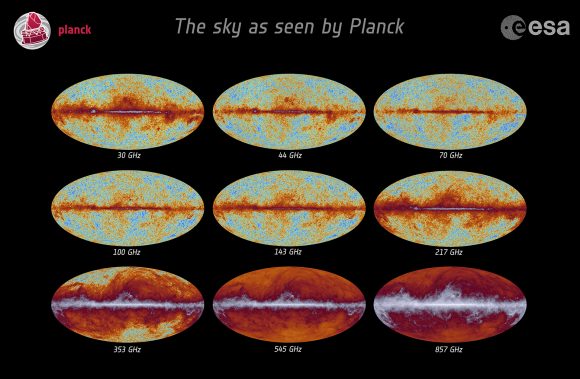
The problem is that BICEP2 and Planck are designed to search for different frequencies. In order to really get to the bottom of this question, more searches need to be done, scanning a series of overlapping frequencies. And that’s in the works now.
BICEP2 and Planck and the newly developed South Pole Telescope as well as some observatories in Chile are all scanning the skies at different frequencies at the same time. Distortion from various types of foreground objects, like dust or radiation should be brighter or dimmer in the different frequencies, while the light from the cosmic microwave background radiation should remain constant throughout.
There are more telescopes, searching more wavelengths of light, searching more of the sky. We could know the answer to this question with more certainty shortly.
One of the most interesting implications of cosmic inflation, if proven, is that our Universe is actually just one in a vast multiverse. While the Universe was undergoing that dramatic expansion, it could have created bubbles of spacetime that spawned other universes, with different laws of physics.

In fact, the father of inflation, Alan Guth, said, “It’s hard to build models of inflation that don’t lead to a multiverse.”
And so, if inflation does eventually get confirmed, then we’ll have a whole multiverse to search for in the cosmic microwave background radiation.
The Big Bang was one of the greatest theories in the history of science. Although it did have a few problems, cosmic inflation was developed to address them. Although there have been a few false starts, astronomers are now performing a sensitive enough search that they might find evidence of this amazing inflationary period. And then it’ll be Nobel Prizes all around.
How We’ve ‘Morphed’ From “Starry Night” to Planck’s View of the BICEP2 Field

From the vantage point of a window in an insane asylum, Vincent van Gogh painted one of the most noted and valued artistic works in human history. It was the summer of 1889. With his post-impressionist paint strokes, Starry Night depicts a night sky before sunrise that undulates, flows and is never settled. Scientific discoveries are revealing a Cosmos with such characteristics.
Since Vincent’s time, artists and scientists have taken their respective paths to convey and understand the natural world. The latest released images taken by the European Planck Space Telescope reveals new exquisite details of our Universe that begin to touch upon the paint strokes of the great master and at the same time looks back nearly to the beginning of time. Since Van Gogh – the passage of 125 years – scientists have constructed a progressively intricate and incredible description of the Universe.

The path from Van Gogh to the Planck Telescope imagery is indirect, an abstraction akin to the impressionism of van Gogh’s era. Impressionists in the 1800s showed us that the human mind could interpret and imagine the world beyond the limitations of our five senses. Furthermore, optics since the time of Galileo had begun to extend the capability of our senses.
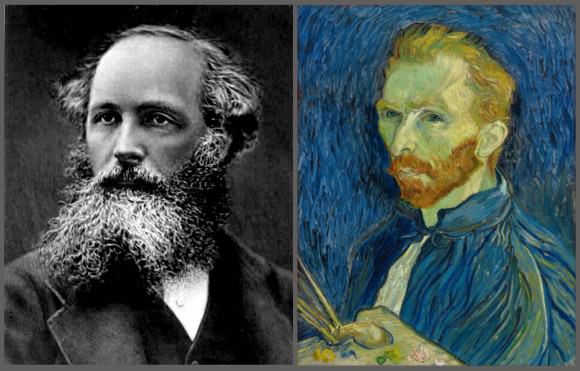
Mathematics is perhaps the greatest form of abstraction of our vision of the World, the Cosmos. The path of science from the era of van Gogh began with his contemporary, James Clerk Maxwell who owes inspiration from the experimentalist Michael Faraday. The Maxwell equations mathematically define the nature of electricity and magnetism. Since Maxwell, electricity, magnetism and light have been intertwined. His equations are now a derivative of a more universal equation – the Standard Model of the Universe. The accompanying Universe Today article by Ramin Skibba describes in more detail the new findings by Planck Mission scientists and its impact on the Standard Model.
The work of Maxwell and experimentalists such as Faraday, Michelson and Morley built an overwhelming body of knowledge upon which Albert Einstein was able to write his papers of 1905, his miracle year (Annus mirabilis). His theories of the Universe have been interpreted, verified time and again and lead directly to the Universe studied by scientists employing the Planck Telescope.
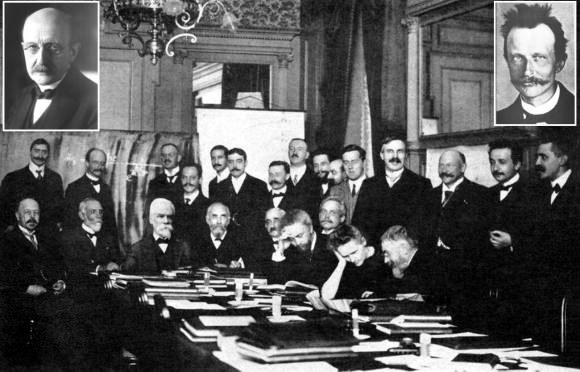
In 1908, the German physicist Max Planck, for whom the ESA telescope is named, recognized the importance of Einstein’s work and finally invited him to Berlin and away from the obscurity of a patent office in Bern, Switzerland.
As Einstein spent a decade to complete his greatest work, the General Theory of Relativity, astronomers began to apply more powerful tools to their trade. Edwin Hubble, born in the year van Gogh painted Starry Night, began to observe the night sky with the most powerful telescope in the World, the Mt Wilson 100 inch Hooker Telescope. In the 1920s, Hubble discovered that the Milky Way was not the whole Universe but rather an island universe, one amongst billions of galaxies. His observations revealed that the Milky Way was a spiral galaxy of a form similar to neighboring galaxies, for example, M31, the Andromeda Galaxy.
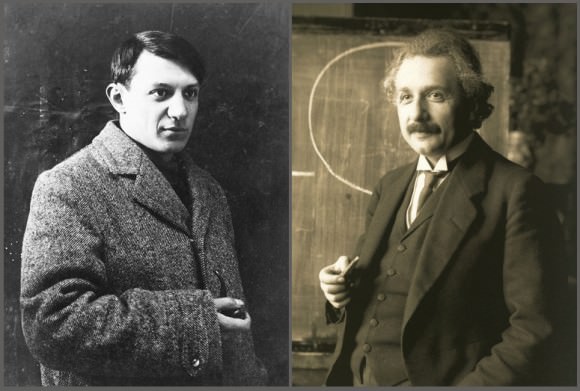
Einstein’s equations and Picasso’s abstraction created another rush of discovery and expressionism that propel us for another 50 years. Their influence continues to impact our lives today.
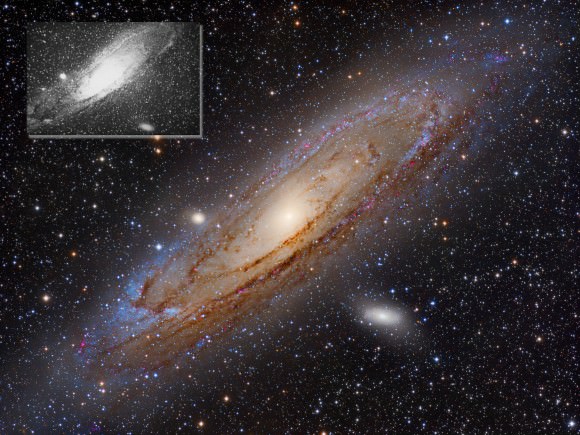
Telescopes of Hubble’s era reached their peak with the Palomar 200 inch telescope, four times the light gathering power of Mount Wilson’s. Astronomy had to await the development of modern electronics. Improvements in photographic techniques would pale in comparison to what was to come.
The development of electronics was accelerated by the pressures placed upon opposing forces during World War II. Karl Jansky developed radio astronomy in the 1930s which benefited from research that followed during the war years. Jansky detected the radio signature of the Milky Way. As Maxwell and others imagined, astronomy began to expand beyond just visible light – into the infrared and radio waves. Discovery of the Cosmic Microwave Background (CMB) in 1964 by Arno Penzias and Robert Wilson is arguably the greatest discovery from observations in the radio wave (and microwave) region of the electromagnetic spectrum.
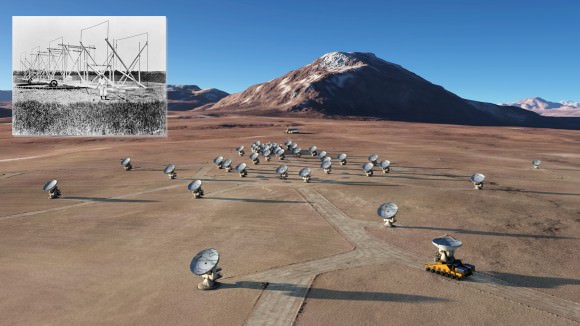
Analog electronics could augment photographic studies. Vacuum tubes led to photo-multiplier tubes that could count photons and measure more accurately the dynamics of stars and the spectral imagery of planets, nebulas and whole galaxies. Then in the 1947, three physicists at Bell Labs , John Bardeen, Walter Brattain, and William Shockley created the transistor that continues to transform the World today.
For astronomy and our image of the Universe, it meant more acute imagery of the Universe and imagery spanning across the whole electromagnetic spectrum. Infrared Astronomy developed slowly beginning in the 1800s but it was solid state electronics in the 1960s when it came of age. Microwave or Millimeter Radio Astronomy required a marriage of radio astronomy and solid state electronics. The first practical millimeter wave telescope began operations in 1980 at Kitt Peak Observatory.
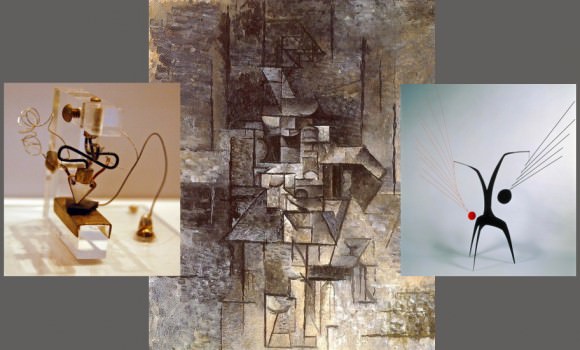
With further improvements in solid state electronics and development of extremely accurate timing devices and development of low-temperature solid state electronics, astronomy has reached the present day. With modern rocketry, sensitive devices such as the Hubble and Planck Space Telescopes have been lofted into orbit and above the opaque atmosphere surrounding the Earth.
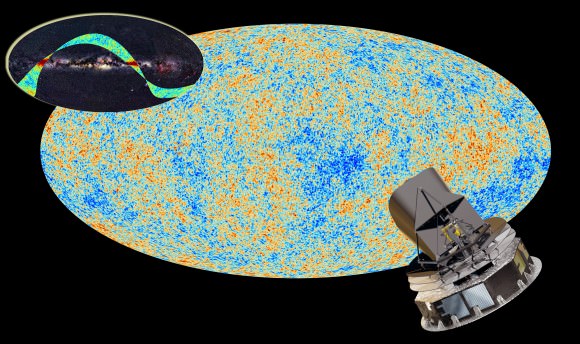
Astronomers and physicists now probe the Universe across the whole electromagnetic spectrum generating terabytes of data and abstractions of the raw data allow us to look out into the Universe with effectively a sixth sense, that which is given to us by 21st century technology. What a remarkable coincidence that the observations of our best telescopes peering through hundreds of thousands of light years, even more so, back 13.8 billion years to the beginning of time, reveal images of the Universe that are not unlike the brilliant and beautiful paintings of a human with a mind that gave him no choice but to see the world differently.
Now 125 years later, this sixth sense forces us to see the World in a similar light. Peer up into the sky and you can imagine the planetary systems revolving around nearly every star, swirling clouds of spiral galaxies, one even larger in the sky than our Moon, and waves of magnetic fields everywhere across the starry night.
Consider what the Planck Mission is revealing, questions it is answering and new ones it is raising – It Turns Out Primordial Gravitational Waves Weren’t Found.
It Turns Out Primordial Gravitational Waves Weren’t Found
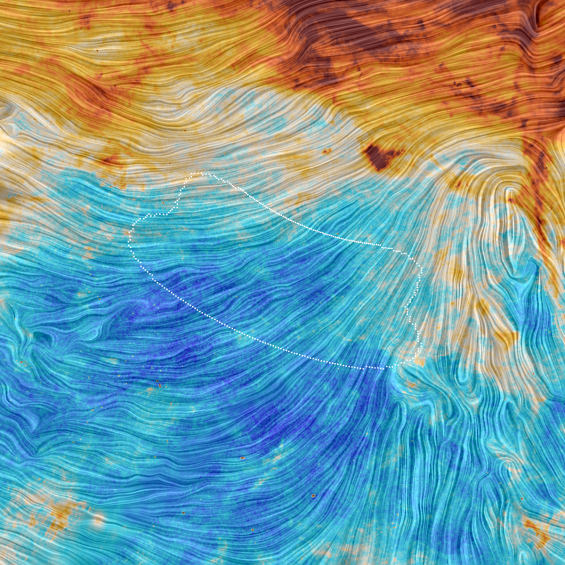
Last March, international researchers from the Background Imaging of Cosmic Extragalactic Polarization (BICEP2) telescope at the South Pole claimed that they detected primordial “B-mode” polarization of the cosmic microwave background (CMB) radiation. If confirmed, this would have been an incredibly important discovery for astrophysics, as it would constitute evidence of gravitational waves due to cosmic inflation in the first moments of the universe. Nevertheless, as often happens in science, the situation turns out to be more complicated than it initially appeared.
In a joint analysis of data from BICEP2/Keck Array in the South Pole and the space-based Planck telescope, scientists from both collaborations now have a more complete picture and argue that the interpretation of the evidence is muddier than they had previously thought. Their paper will appear in the arXiv pre-print server in a few days and is submitted for publication in the journal Physical Review Letters. [Update: the paper is now available on the arXiv.] The European Space Agency issued a press release about the paper on Friday after a summary of it was leaked and briefly posted on a French website.
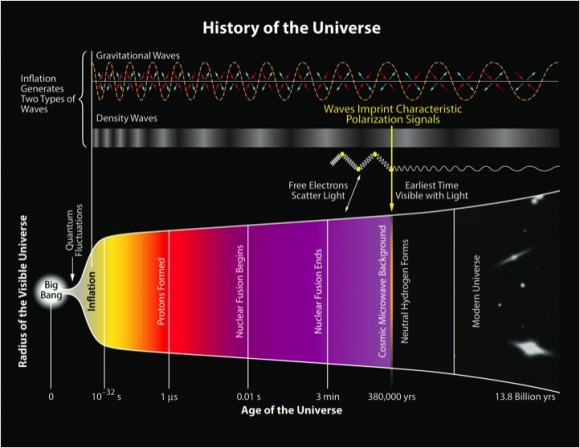
According to inflationary theory, the universe expanded for a brief period at an exponential rate 10-36 seconds after the Big Bang. As a result, models of inflation predict that this rapid acceleration would create ripples in space, generating gravitational waves that would remain energetic enough to leave an imprint on the last-scattered photons, the CMB radiation, approximately 380,000 years later. The CMB spectrum, the “afterglow of the hot Big Bang,” has rich structure in it and has been measured to a “ridiculous level of precision,” according to Professor Martin White (University of California, Berkeley), who gave a plenary talk on cosmology results from Planck at the recent American Astronomical Society meeting.
The twists in the polarization signal of the CMB, known as B-modes (shown below) and quantified by a nonzero tensor-to-scalar ratio r, would be evidence in favor of inflation but they are much more difficult to detect. Scientists are trying to decipher a signal on the level of parts per trillion of ambient temperature, mere fractions of a nano-degree! Since inflation would explain why the universe appears to have no overall curvature, why it approximately appears the same in all directions, and why it has structures of galaxies in it, BICEP2’s result last year—the first claimed detection of cosmic inflation—excited physicists around the world. But last summer, Planck scientists presented a map of polarized light from interstellar dust grains and argued that the polarization signal BICEP2 detected could be due to “foreground” dust in our own Milky Way galaxy rather than due to primordial gravitational waves in the distant universe. The hotly debated controversy remained unresolved and led to the new joint analysis by scientists from both teams.
BICEP2 is sensitive to low frequencies (150 GHz) while Planck is more sensitive to higher ones (353 GHz). As Professor Brian Keating (University of California, San Diego), a member of the BICEP2 collaboration, puts it, “it’s as if you’re listening to an opera, but BICEP2 could only hear the tenors and Planck could only hear the sopranos.” Unfortunately, the joint analysis produced only an upper limit to the value of r, meaning that the evidence for B-mode polarization due to inflation remains elusive for now. “It’s probably at best an admixture of Milky Way dust and gravitational waves,” says Keating. [Full disclosure: until last year, Ramin Skibba was a research scientist in the same department but in a different field as Keating at UC San Diego.]
This result must seem disappointing to BICEP2 scientists, but science often works this way, especially for such a difficult phenomenon to study. The signal is strong, but the interpretation is more complicated than it first appeared. On a positive note, the analysis shows that CMB researchers are faced with a foreground challenge rather than one due to the Earth’s atmosphere or to their detectors.
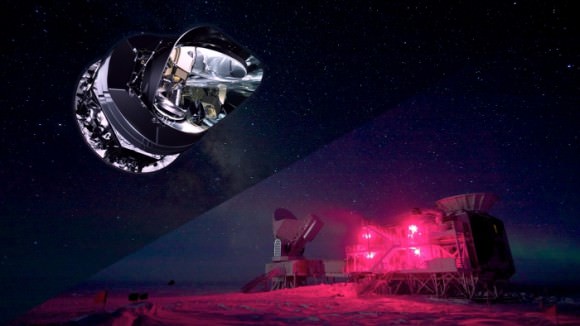
Although Planck will have additional polarization measurements and more assessments of systematic uncertainties in a later data release, they will not be able to settle this debate for now. But new experiments will come online soon, including a BICEP3, and they will produce more precise measurements that could effectively remove the contribution from dust. The signal is tractable, and scientists are looking forward to the day when they can declare with strong statistical significance that they have finally discovered evidence of inflation.
What Came Before the Big Bang?
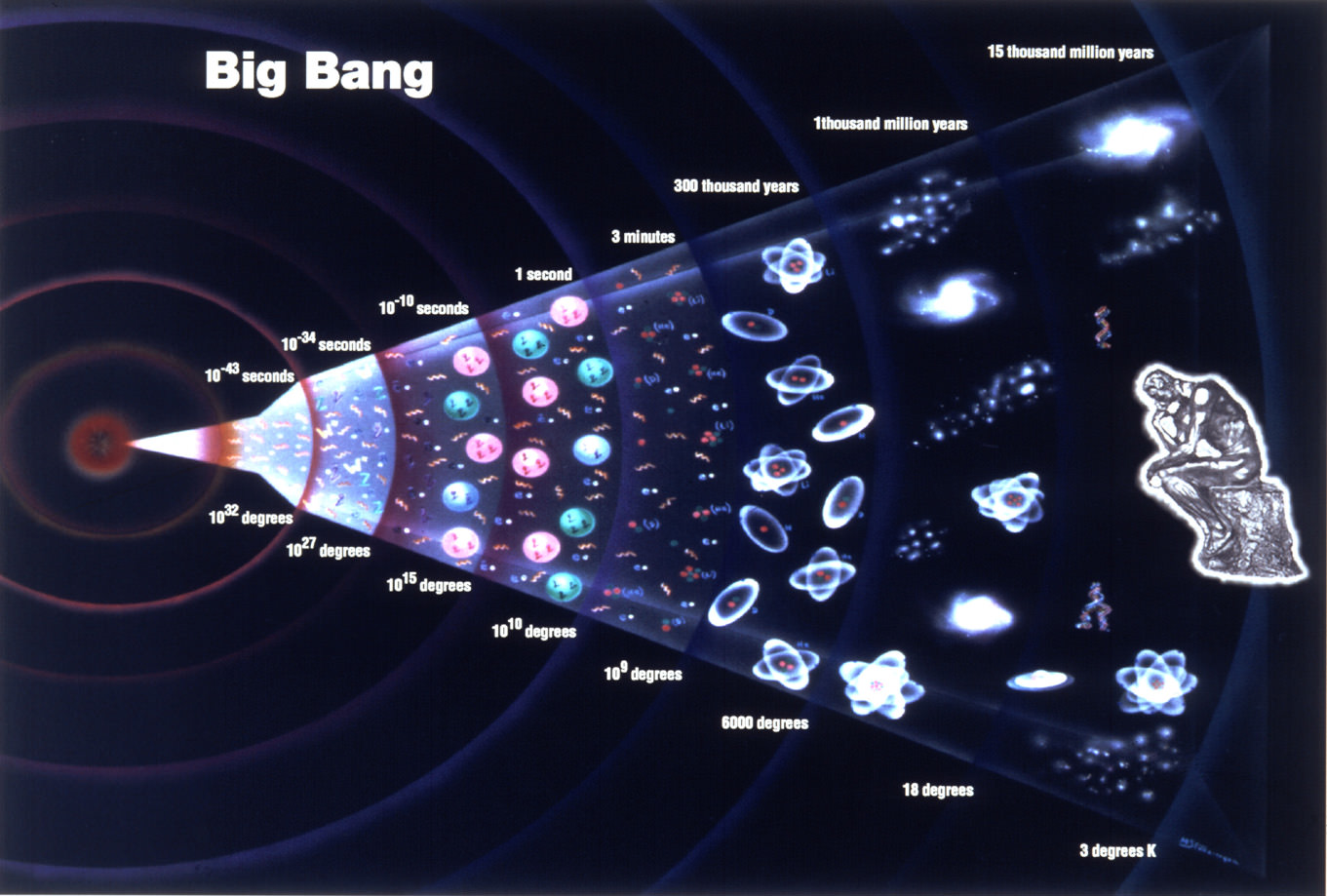
Astronomers are pretty sure what happened after the Big Bang, but what came before? What are the leading theories for the causes of the Big Bang?
About 13.8 billion years ago the Universe started with a bang, kicked the doors in, brought fancy cheeses and a bag of ice, spiked the punch bowl and invited the new neighbors over for all-nighter to encompass all all-nighters from that point forward.
But what happened before that?
What was going on before the Big Bang? Usually, we tell the story of the Universe by starting at the Big Bang and then talking about what happened after. Similarly and completely opposite to how astronomers view the Universe… by standing in the present and looking backwards. From here, the furthest we can look back is to the cosmic microwave background, which is about 380,000 years after the big bang.
Before that we couldn’t hope to see a thing, the Universe was just too hot and dense to be transparent. Like pea soup. Soup made of delicious face burning high energy everything.
In traditional stupid earth-bound no-Tardis life unsatisfactory fashion, we can’t actually observe the origin of the Universe from our place in time and space.
Damn you… place in time and space.
Fortunately, the thinky types have come up with some ideas, and they’re all one part crazy, one part mind bendy, and 100% bananas. The first idea is that it all began as a kind of quantum fluctuation that inflated to our present universe.
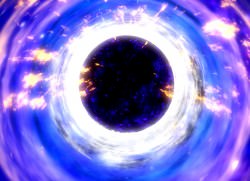
Something very, very subtle expanding over time resulting in, as an accidental byproduct, our existence. The alternate idea is that our universe began within a black hole of an older universe.
I’m gonna let you think about that one. Just let your brain simmer there.
There was universe “here”, that isn’t our universe, then that universe became a black hole… and from that black hole formed us and EVERYTHING around us. Literally, everything around us. In every direction we look, and even the stuff we just assume to be out there.
Here’s another one. We see particles popping into existence here in our Universe. What if, after an immense amount of time, a whole Universe’s worth of particles all popped into existence at the same time. Seriously… an immense amount of time, with lots and lots of “almost” universes that didn’t make the cut.
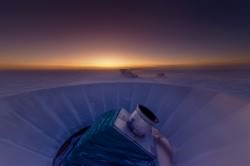
More recently, the BICEP2 team observed what may be evidence of inflation in the early Universe.
Like any claim of this gravity, the result is hotly debated. If the idea of inflation is correct, it is possible that our universe is part of a much larger multiverse. And the most popular form would produce a kind of eternal inflation, where universes are springing up all the time. Ours would just happen to be one of them.
It is also possible that asking what came before the big bang is much like asking what is north of the North Pole. What looks like a beginning in need of a cause may just be due to our own perspective. We like to think of effects always having a cause, but the Universe might be an exception. The Universe might simply be. Because.
You tell us. What was going on before the party started? Let us know in the comments below.
And if you like what you see, come check out our Patreon page and find out how you can get these videos early while helping us bring you more great content!
Higgs Boson Threatened The Early Universe, But Gravity Saved The Day
All the physical properties of our Universe – indeed, the fact that we even exist within a Universe that we can contemplate and explore – owe to events that occurred very early in its history. Cosmologists believe that our Universe looks the way it does thanks to a rapid period of inflation immediately before the Big Bang that smoothed fluctuations in the vacuum energy of space and flattened out the fabric of the cosmos itself.
According to current theories, however, interactions between the famed Higgs boson and the inflationary field should have caused the nascent Universe to collapse. Clearly, this didn’t happen. So what is going on? Scientists have worked out a new theory: It was gravity that (literally) held it all together.
The interaction between the curvature of spacetime (more commonly known as gravity) and the Higgs field has never been well understood. Resolving the apparent problem of our Universe’s stubborn existence, however, provides a good excuse to do some investigating. In a paper published this week in Physical Review Letters, researchers from the University of Copenhagen, the University of Helsinki, and Imperial College London show that even a small interaction between gravity and the Higgs would have been sufficient to stave off a collapse of the early cosmos.
The researchers modified the Higgs equations to include the effect of gravity generated by UV-scale energies. These corrections were found to stabilize the inflationary vacuum at all but a narrow range of energies, allowing expansion to continue and the Universe as we know it to exist… without the need for new physics beyond the Standard Model.
This new theory is based on the controversial evidence of inflation announced by BICEP2 earlier this summer, so its true applicability will depend on whether or not those results turn out to be real. Until then, the researchers are hoping to support their work with additional observational studies that seek out gravitational waves and more deeply examine the cosmic microwave background.
At this juncture, the Higgs-gravity interaction is not a testable hypothesis because the graviton (the particle that handles all of gravity’s interactions) itself has yet to be detected. Based purely on the mathematics, however, the new theory presents an elegant and efficient solution to the potential conundrum of why we exist at all.
New Results from Planck: It Doesn’t Look Good For BICEP2
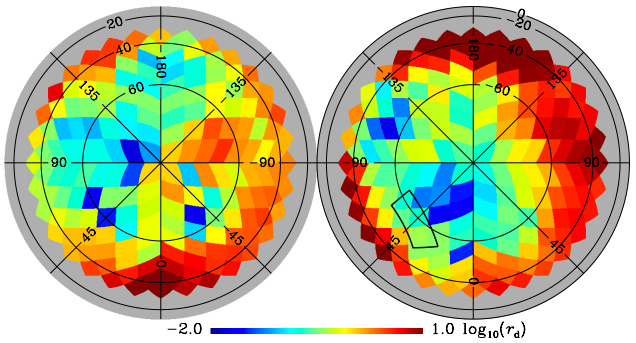
One of the recent sagas in cosmology began with the BICEP2 press conference announcing evidence of early cosmic inflation. There was some controversy since the press release was held before the paper was peer reviewed. The results were eventually published in Physical Review Letters, though with a more cautious conclusion than the original press release. Now the Planck team has released more of their data. This new work hasn’t yet been peer reviewed, but it doesn’t look good for BICEP2.
As you might recall, BICEP2 analyzed light from the cosmic microwave background (CMB) looking for a type of pattern known as B-mode polarization. This is a pattern of polarized light that (theoretically) is caused by gravitational waves produced by early cosmic inflation. There’s absolutely no doubt that BICEP2 detected B-mode polarization, but that’s only half the challenge. The other half is proving that the B-mode polarization they saw was due to cosmic inflation, and not due to some other process, mainly dust. And therein lies the problem. Dust is fairly common in the Milky Way, and it can also create B-mode polarization. Because the dust is between us and the CMB, it can contaminate its B-mode signal. This is sometimes referred to as the foreground problem. To really prove you have evidence of B-mode polarization in the CMB, you must ensure that you’ve eliminated any foreground effects from your data.
When the BICEP2 results were first announced, the question of dust was immediately raised. Some researchers noted that dust particles caught in magnetic fields could produce stronger B-mode effects than originally thought. Others pointed out that part of the data BICEP2 used to distinguish foreground dust wasn’t very accurate. This is part of the reason the final results went from “We found inflation!” to “We think we’ve found inflation! (But we can’t be certain.)”
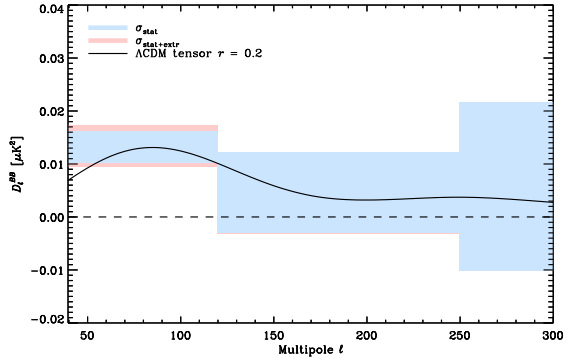
Credit: Planck Collaboration
The new results from Planck chip at that claim even further. Whereas BICEP2 looked at a specific region of the sky, Planck has been gathering data across the entire sky. This means lots more data that can be used to distinguish foreground dust from a CMB signal. This new paper presented a map of the foreground dust, and a good summary can be seen in the figure. The shaded areas represents the B-mode levels due to dust at different scales. The solid line represents the B-mode distribution due to inflation as seen by BICEP2. As you can see, it matches the dust signal really well.
The simple conclusion is that the results of BICEP2 have been shown to be dust, but that isn’t quite accurate. It is possible that BICEP2 has found a mixture of dust and inflation signals, and with a better removal of foreground effects there may still be a real result. It is also possible that it’s all dust.
While this seems like bad news, it actually answers a mystery in the BICEP2 results. The level of inflation claimed by BICEP2 was actually quite large. Much larger than expected than many popular models. The fact that a good chuck of the B-mode polarization is due to dust means that inflation can’t be that large. So small inflation models are back in favor. It should also be emphasized that even if the BICEP2 results are shown to be entirely due to dust, that doesn’t mean inflation doesn’t exist. It would simply mean we have no evidence either way.
It’s tempting to look at all this with a bit of schadenfreude. Har, har, the scientists got it wrong again. But a more accurate view would be of two rival sports teams playing an excellent game. BICEP2 almost scored, but Planck rallied an excellent defense. Both teams want to be the first to score, but the other team won’t let them cheat to win. And we get to watch it happen.
Anyone who says science is boring hasn’t been paying attention.
Has the Cosmology Standard Model become a Rube Goldberg Device?
This week at the Royal Astronomical Society’s National Astronomy Meeting in the UK, physicists are challenging the evidence for the recent BICEP2 results regarding the inflation period of the Universe, announced just 90 days ago. New research is laying doubt upon the inclusion of inflation theory in the Standard Cosmological Model for understanding the forces of nature, the nature of elementary particles and the present state of the known Universe.
Back on March 17, 2014, it seemed the World was offered a glimpse of an ultimate order from eons ago … actually from the beginning of time. BICEP2, the single purpose machine at the South Pole delivered an image that after analysis, and subtraction of estimated background signal from the Milky Way, lead its researchers to conclude that they had found the earliest remnant from the birth of the Universe, a signature in ancient light that supported the theory of Inflation.
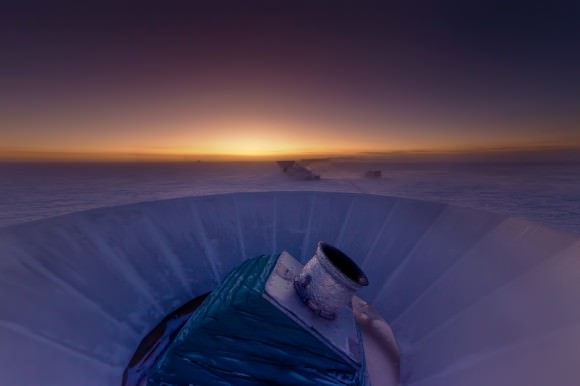
Thirty years ago, the Inflation theory was conceived by physicists Alan Guth and Andei Linde. Guth, Linde and others realized that a sudden expansion of the Universe at only 1/1000000000000000000000000000000000th of a second after the Big Bang could solve some puzzling mysteries of the Cosmos. Inflation could explain the uniformity of the cosmic background radiation. While images such as from the COBE satellite show a blotchy distribution of radiation, in actuality, these images accentuate extremely small variations in the background radiation, remnants from the Big Bang, variations on the order of 1/100,000th of the background level.
Note that the time of the Universe’s proposed Inflationary period immediately after the Big Bang would today permit light to travel only 1/1000000000000000th of the diameter of the Hydrogen atom. The Universe during this first moment of expansion was encapsulated in a volume far smaller than the a single atom.
Emotions ran very high when the BICEP2 team announced their findings on March 17 of this year. The inflation event that the background radiation data supported is described as a supercooling of the Cosmos however, there were physicists that simply remained cool and remained contrarians to the theory. Noted British Physicist Sir Roger Primrose was one who remained underwhelmed and stated that the incredible circular polarization of light that remained in the processed data from BICEP2 could be explained by the interaction of dust, light and magnetic fields in our own neighborhood, the Milky Way.
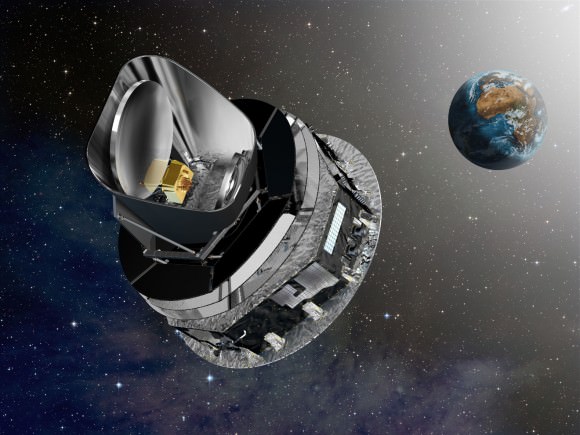
Now, new observations from another detector, one on the Planck Satellite orbiting the Earth, is revealing that the contribution of background radiation from local sources, the dust in the Milky Way, is appearing to have been under-estimated by the BICEP2 team. All the evidence is not yet laid out but the researchers are now showing reservations. At the same time, it does not dismiss the Inflation Theory. It means that more observations are needed and probably with greater sensitivity.
So why ask the question, are physicists constructing a Rube Goldberg device?
Our present understanding of the Universe stands upon what is called “the Standard Model” of Cosmology. At the Royal Astronomical Society meeting this week, the discussions underfoot could be revealing a Standard Model possibly in a state of collapse or simply needing new gadgets and mechanisms to remain the best theory of everything.
Also this week, new data further supports the discovery of the Higg’s Boson by the Large Hadron Collider in 2012, the elementary particle whose existence explains the mass of fundamental particles in nature and that supports the existence of the Higgs Field vital to robustness of the Standard Model. However, the Higgs related data is also revealing that if the inflationary period of the Universe did take place, then if taken with the Standard Model, one can conclude that the Universe should have collapsed upon itself and our very existence today would not be possible.
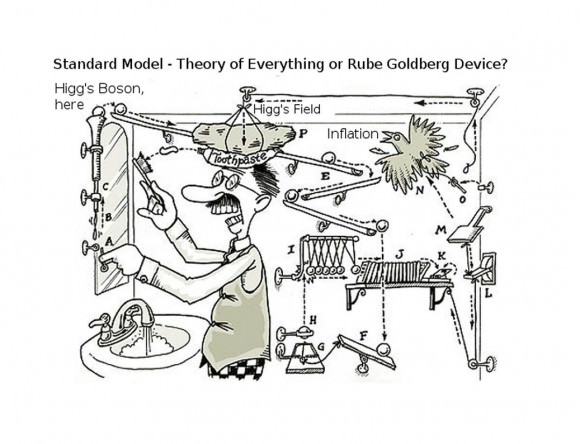
Dr. Brian Green, a researcher in the field of Super String Theory and M-Theory and others such as Dr. Stephen Hawking, are quick to state that the Standard Model is an intermediary step towards a Grand Unified Theory of everything, the Universe. The contortion of the Standard Model, into a sort of Rube Goldberg device can be explained by the undaunting accumulation of more acute and diverse observations at cosmic and quantum scales.
Discussions at the Royal Astronomical Society meeting are laying more doubts upon the inflation theory which just 90 days ago appeared so well supported by BICEP2 – data derived by truly remarkable cutting edge electronics developed by NASA and researchers at the California Institute of Technology. The trials and tribulations of these great theories to explain everything harken back to the period just prior to Einstein’s Miracle Year, 1905. Fragmented theories explaining separately the forces of nature were present but also the accumulation of observational data had reached a flash point.
Today, observations from BICEP2, NASA and ESA great space observatories, sensitive instruments buried miles underground and carefully contrived quantum experiments in laboratories are making the Standard Model more stressed in explaining everything, the same model so well supported by the Higg’s Boson discovery just two years ago. Cosmologists concede that we may never have a complete, proven theory of everything, one that is elegant; however, the challenges upon the Standard Model and inflation will surely embolden younger theorists to double the efforts in other theoretical work.
For further reading:
RAS NAM press release: Should the Higgs Boson Have Caused our Universe To Collapse?
We’ve Discovered Inflation!: Now What?
Cosmologists Cast Doubt on Inflation Evidence
Are the BICEP2 Results Invalid? Probably Not
Are the BICEP2 Results Invalid? Probably Not.
Recently rumors have been flying that the BICEP2 results regarding the cosmic inflationary period may be invalid. It all started with a post by Dan Falkowski on his blog Resonaances, where he claimed that the BICEP2 had misinterpreted some data, which rendered their results invalid, or at least questionable. The story was then picked up by Nature’s Blog and elsewhere, which has sparked some heated debate.
So what’s really going on?
For those who might not remember, BICEP2 is a project working to detect polarized light within the cosmic microwave background (CMB). Specifically they were looking for a type of polarization known as B-mode polarization. Detection of B-mode polarization is important because one mechanism for it is cosmic inflation in the early universe, which is exactly what BICEP2 claimed to have evidence of.
Part of the reason BICEP2 got so much press is because B-mode polarization is particularly difficult to detect. It is a small signal, and you have to filter through a great deal of observational data to be sure that your result is valid. But you also have to worry about other sources that look like B-mode polarization, and if you don’t account for them properly, then you could get a “false positive.” That’s where this latest drama arises.
In general this challenge is sometimes called the foreground problem. Basically, the cosmic microwave background is the most distant light we can observe. All the galaxies, dust, interstellar plasma and our own galaxy is between us and the CMB. So to make sure that the data you gather is really from the CMB, you have to account for all the stuff in the way (the foreground). We have ways of doing this, but it is difficult. The big challenge is to account for everything.
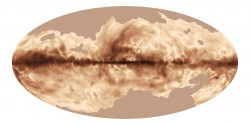
Soon after the BICEP2 results, another team noted a foreground effect that could effect the BICEP2 results. It involves an effect known as radio loops, where dust particles trapped in interstellar magnetic fields can emit polarized light similar to B-mode polarization. How much of an effect this might have is unclear. Another project being done with the Planck satellite is also looking at this foreground effect, and has released some initial results (seen in the figure), but hasn’t yet released the actual data yet.
Now it has come to light that BICEP2 did, in fact, take some of this foreground polarization into account, in part using results from Planck. But since the raw data hadn’t been released, the team used data taken from a PDF slide of Planck results and basically reverse-engineered the Planck data. It is sometimes referred to as “data scraping”, and it isn’t ideal, but it works moderately well. Now there is some debate as to whether that slide presented the real foreground polarization or some averaged polarization. If it is the latter, then the BICEP2 results may have underestimated the foreground effect. Does this mean the BICEP2 results are completely invalid? Given what I’ve seen so far, I don’t think it does. Keep in mind that the Planck foreground is one of several foreground effects that BICEP2 did account for. It could be a large error, but it could also be a rather minor one.
The important thing to keep in mind is that the BICEP2 paper is still undergoing peer review. Critical analysis of the paper is exactly what should happen, and is happening. This type review used to be confined to the ivory towers, but with social media it now happens in the open. This is how science is done. BICEP2 has made a bold claim, and now everyone gets to whack at them like a piñata.
The BICEP2 team stands by their work, and so we’ll have to see whether it holds up to peer review. We’ll also have to wait for the Planck team to release their results on B-mode polarization. Eventually the dust will settle and we’ll have a much better handle on the results.

